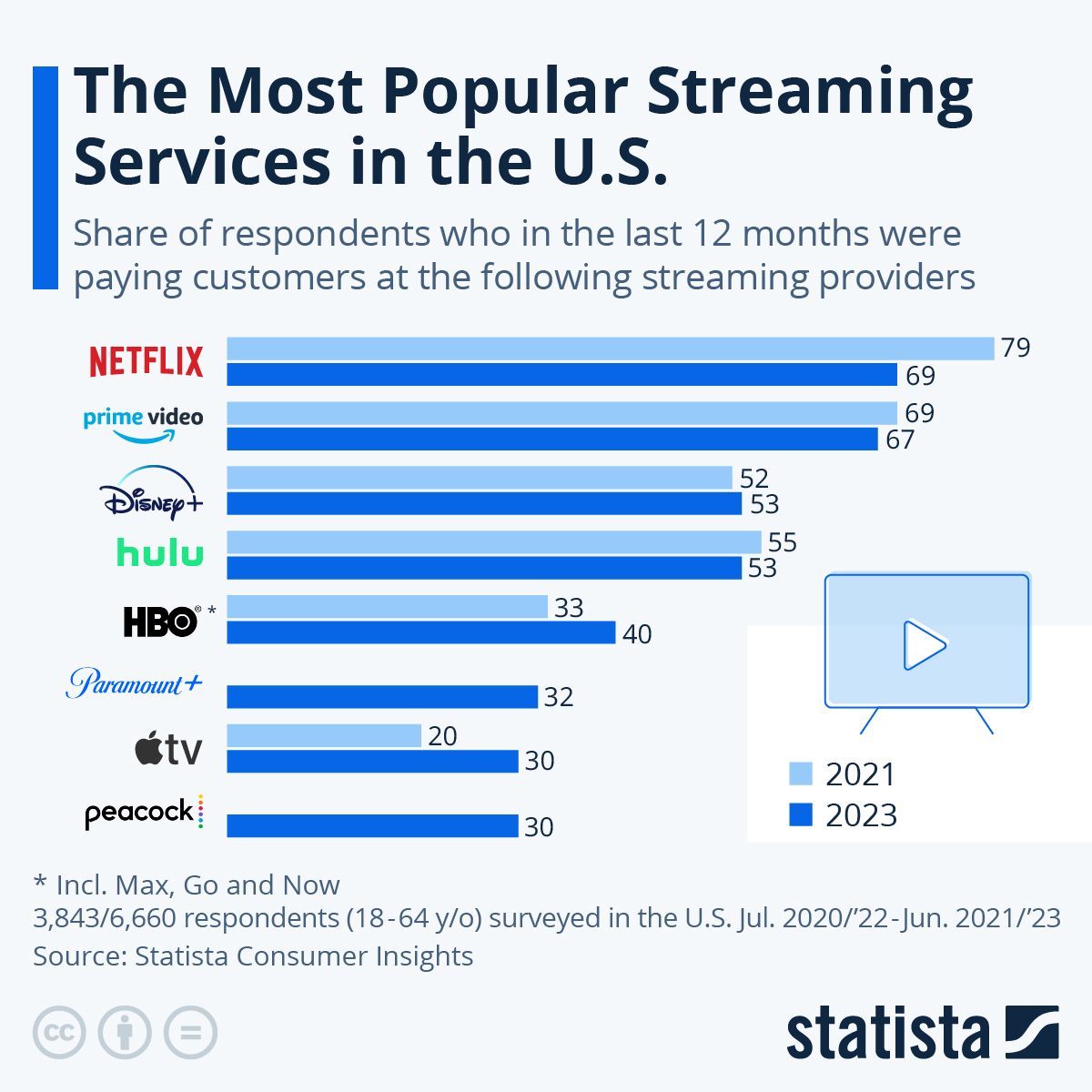While the fragmentation of the relatively young subscription video-on-demand (SVoD) industry continues, Netflix is still the preferred streaming platform of choice for most Americans surveyed in our Statista Consumer Insights. However, compared to two years ago, the company's offering seems to have lost a bit of its shine.
In 2021, 79 percent of respondents claimed to be paying Netflix customers. This number went down to 69 percent this year, with Amazon Prime Video seeing a similar albeit less drastic decrease in usage. While the exact reasons for this usage decline contrasted with the overall growth of Netflix, which now boasts about 238 million paid subscribers, are hard to pinpoint, one reason could be the increased competition in the market.
For example, Peacock, operated by NBC Universal and, by extension, broadcast giant Comcast, and Paramount+, which features exclusive shows in the Star Trek universe, hadn't yet gained traction in 2021. The former had only just been introduced in July 2020, while the latter had been around as CBS All Access since 2014 but only gained a broader library after the re-merger of CBS and Viacom at the end of 2019.
Over the last couple of years, SVoD services have become the driving force behind video consumption and have also begun influencing areas reserved for regular TV shows and movies in the past. For example, since 2018, Netflix productions have consistently earned more than 100 Emmy nominations per year. The actual market size of subscription-based video is hard to gauge precisely, though. Some estimates for 2022 range from $80 billion to $100 billion worldwide, while the Motion Picture Association representing the five major U.S. studios Sony Pictures, Disney, Universal, Warner Brothers and Paramount as well as Netflix gave an estimate of $42.5 billion for the digital video market in 2021.





















